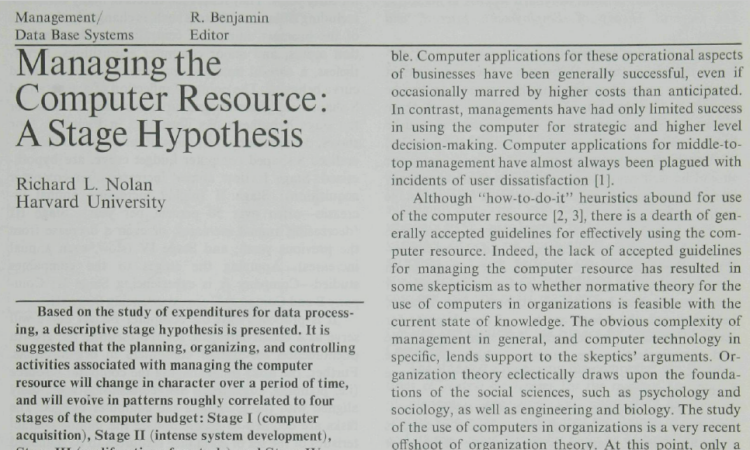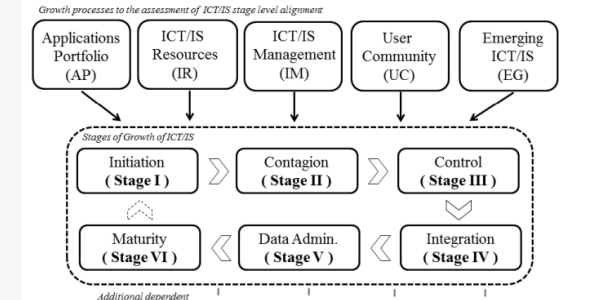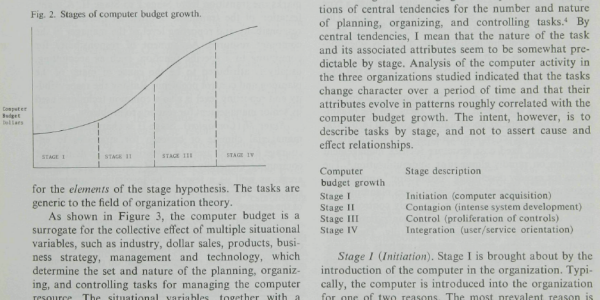
[ Academic Research ] • edition 1.0 • March/2019
STAGE LEVEL MEASUREMENT OF ICT/IS AND ANALYTICS DIFFUSION IN ORGANIZATIONS

[ Academic Research ] • edition 1.0 • March/2019
STAGE LEVEL MEASUREMENT OF ICT/IS AND ANALYTICS DIFFUSION IN ORGANIZATIONS
This study has the objective to measure and explain the Stage Level of Information and Communication Technology/Information Systems (ICT/IS) initiatives in Organizations and its influence in Organizational Innovation (exploration and exploitation), moderated by the level of Analytics in use in Organizations. The theoretical body that guide this Research is based on seminal studies and subsequent contributions regarding three corpus of knowledge: Stages of Growth Theory in Management Information Systems (SGT/MIS) (Nolan, 1973, 1979), Organizational Innovation studies (exploration and exploitation) (Jansen, Bosch, Van Den, & Volberda, 2006), and Diffusion of Innovation Theory (Rogers, 2003).

The root of the studies regarding SGT/MIS comes from the research conducted at Harvard Business School by Professor Neil C. Churchill, James L. McKenney, F. Warren McFarlan and Richard L. Nolan, in the 1970s. The original concepts behind the Nolan´s Stages of Growth Theory (NSGT) were proposed by Richard L. Nolan in 1973 by the article "Managing the Computer Resource: A Stage Hypothesis", published in Communications of ACM journal, where a descriptive stage hypothesis was presented, based on the study of expenditures for Data Processing (DP).

Participation in this survey is restricted to guests only. To apply for an invitation, request yours here.

As a theoretical contribution, the framework creation to this study and the development of a scale instrument with the purpose of making the measurement of the ICT/IS initiatives stage level in modern organizations, adapted for ...

In the later version of Nolan´s Stages of Growth Model (NSGM), preliminarily presented in 1975, the stage III was divided to include two other stages, thus totalizing six stages. In 1979, another paper reinforced the same 6 stages ...

In the academic field of the Management Information Systems (MIS), Nolan´s Stages of Growth Theory (NSGT) first appeared in 1973 as probably the most well-known and widespread theoretical framework for the assimilation ...